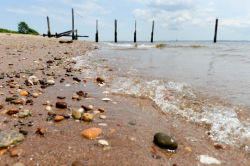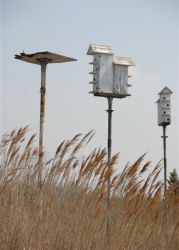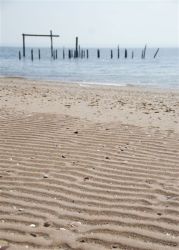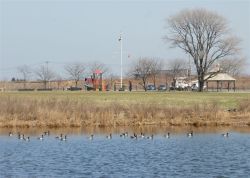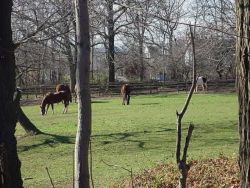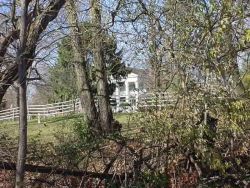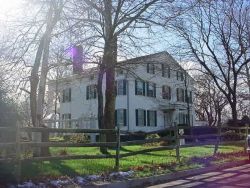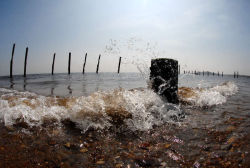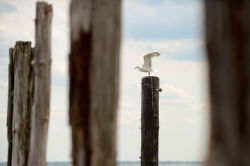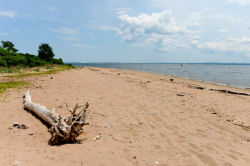Lemon Creek Park
Lemon Creek Park
What was here before?
James Seguine established a large estate on this site in 1786, which was occupied by his descendants for many years. Joseph H. Seguine, James Seguine’s grandson, built a stately Greek Revival mansion here in 1838. The younger Seguine had become a prosperous businessman through with his family’s oyster harvesting business and founder of both the Staten Island Railroad Company and Staten Island Oil and Candlemaking Company. The mansion’s design reflects the classical architecture and thriving commerce of mid-19th century Staten Island. It was sold by the Seguine family in 1868, though it was later purchased by their descendants in 1916 and remained in the family until 1981 when it was sold to preservationist George Burke.
The Lemon Creek area is known as Prince’s Bay, which has appeared alternately on maps and manuals as Princebay, Princes Bay, and Princess Bay. The area was a popular resort at the turn of the century, known for its oysters and bathing beaches.
From 1865 to 1972, the S.S. White Dental Manufacturing Company operated a large factory nearby on the Seguine Point peninsula. The factory was once the largest employer on Staten Island. After a failed attempt to convert the old factory to a retail facility and then a fire, the large complex of buildings was torn down to make way for residential development.
How did this become a park?
The first and largest portion of this site was transferred from the City to NYC Parks in 1962. Additional segments were added in 1983 and 1984. In 1989 George Burke donated the Seguine Mansion and its grounds overlooking Raritan Bay, retaining a lifetime tenancy before transfer. An additional 22.7 acres of waterfront, acquired from the Department of Real Property, were added in 1995.
In the 1990s, several improvements were made, including shoreline stabilization and protection, the construction of a boat launch at Bayview Avenue, a gazebo with nautical motifs, trails with interpretive signs, a footbridge, and a parking lot at Seguine and Bayview Avenues. In 2000, additional improvements included the addition of wooden benches and tables on a concrete overlook on the Raritan Bay. A fishing pier opened in 2002 and is dedicated to community activist Dorothy Fitzpatrick. A pair of large, painted bluefish flank the entrance to the pier.
It serves as a resting point for numerous migratory birds and, in early October, monarch butterflies. One of the only purple martin colonies in New York City can be found here. The waterfront area provides a spawning ground for many species of fish and shellfish, while salt marsh plants such as goldenrod flourish nearby.
In 2025, the playground was renovated with new paving, landscaping, play equipment, an embankment slide, and additional canopy trees,
What is this park named for?
Lemon Creek has been known by several names over the last few hundred years. In 1830, the freshwater stream was known as Seguine’s Creek, and later, as the Little North River in 1895. Shortly thereafter, the name Lemon Creek began to appear on maps, and it has remained, although the origin of this unusual name is not known.
Lemon Creek, which empties into Prince’s Bay, is fed from a watershed that begins over two miles from the creek. The main source is a small freshwater pond near Woodrow Road, known as Porzio’s Pond. The water travels over and underground to Lemon Creek, which carries it down to Prince’s Bay, and ultimately to Raritan Bay. The red clay bluffs in the park, reaching 85 feet above Prince’s Bay at Mt. Loretto and the tallest ocean-facing cliffs in New York State, are part of the harbor hill terminal moraine formed by a receding glacier approximately 15,000 years ago.
Check out your park's Vital Signs
Clean & Safe
Green & Resilient
Empowered & Engaged Users
Share your feedback or learn more about how this park is part of a
Vital Park System

